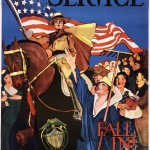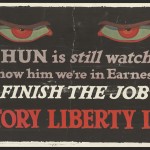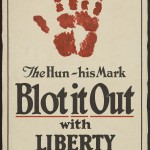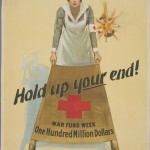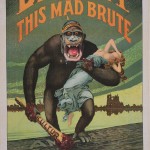The conservation department at the Harry Ransom Center treated many collection items in preparation for the current exhibition The World at War 1914–1918. Among these were numerous posters of various sizes, including a mural-sized poster (about 3 x 5 feet) depicting a Red Cross nurse. The poster reads: “Join—Red Cross Work Must Go On!—all you need is a heart and a dollar.”
The poster came to the paper conservation lab having been lined in the past with a heavy, blue, starch-filled cloth, much like that used for binding books. This inappropriate fabric lining was noticeably wrinkled, and the blue color accentuated a large loss near the upper right corner of the poster. We made the decision to remove this lining and flatten the cockled poster. We also decided to fill the loss with a toned paper to make this area less distracting to the viewer.
First, we surface cleaned the poster using a large, soft brush to remove loose dust and dirt. We continued cleaning the surface grime with rubber sponges, sometimes referred to as “soot sponges.” To remove the lining fabric, we needed to bathe the poster, which would loosen the lining adhesive and allow us to gently peel back the fabric. We tested all of the inks to ensure that they would not be sensitive to water, and we then pre-humidified the print and bathed it in deionized water at a neutral pH. The adhesive began to soften within only a few minutes, and we were able to separate the lining from the poster. While the poster was still in the water bath, verso upward, we could feel that there was still adhesive clinging to the back of the paper. We used wads of cotton to swab off this residual adhesive. We exchanged the water bath two times until we were confident that we had cleaned it as well as we could. Next, we lifted the wet poster out of the bath. Handling wet paper is not difficult because we include a layer of spun polyester—called Reemay—on both the front and back of an item when we bathe it. The Reemay acts as a support during the bath and afterwards, when transporting the wet paper. The poster was allowed to dry flat between layers of Reemay and blotters, under weight.
About a week later, we removed the poster from under the weight and began work on the fill. In paper conservation, Japanese paper is often used to fill losses. This strong, thin paper works well for repairing or filling losses and can be toned to a suitable color. The poster’s missing portion covered both red and off-white sections. We toned a Japanese paper with red acrylic paint and layered this over an off-white Japanese paper. The fill was then shaped to fit the loss and adhered in place with wheat starch paste. Again, the poster was placed between Reemay and blotter, under weight to ensure that the fill would dry flat. Once the poster was completely dried, the fill was trimmed along the outside edge.
This treatment was unusual only in that the poster is so large. Otherwise, the techniques described here are common treatments in paper conservation.
Please click on thumbnails to view larger images.
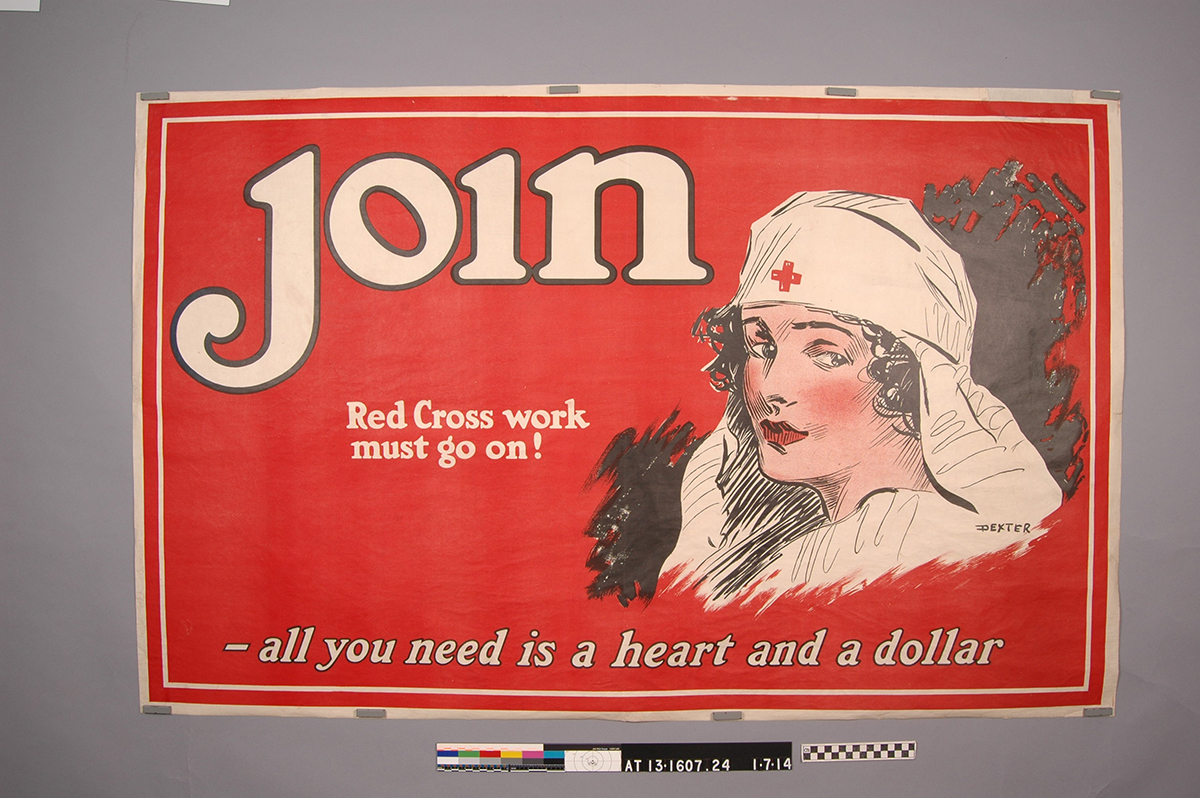
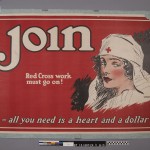
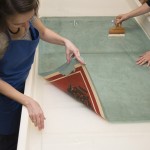
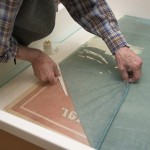
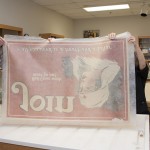
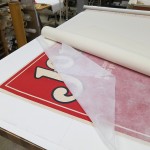
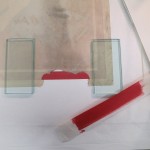
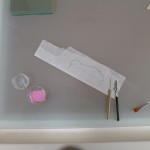
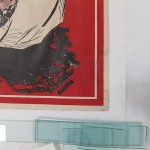
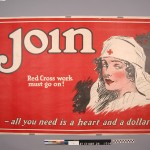
![Sem (1863–1934). “Pour la liberté du monde. Souscrivez á l'Emprunt National á la Banque Nationale de Crédit.” [For the freedom of the world. Subscribe to the National Loan at the Banque Nationale de Crédit.] 1917. Lithograph. 119 x 77 cm.](https://sites.utexas.edu/ransomcentermagazine/files/2014/04/85_130_515_001.jpg)
![Unknown artist. “Soglasie” (“согласие”). 1915. [Agreement or Triple Entente]. Lithograph. 71 x 54 cm.](https://sites.utexas.edu/ransomcentermagazine/files/2014/04/85_85_40-150x150.jpg)
![Sem (1863–1934). “Pour la liberté du monde. Souscrivez á l'Emprunt National á la Banque Nationale de Crédit.” [For the freedom of the world. Subscribe to the National Loan at the Banque Nationale de Crédit.] 1917. Lithograph. 119 x 77 cm.](https://sites.utexas.edu/ransomcentermagazine/files/2014/04/85_130_515_001-150x150.jpg)
